TBI Blogs: How Manipur’s Festivals & Traditions Are Intrinsically Linked to Its Sporting Heritage
Manipur has many diverse festivals, observances, and events celebrating the Gods, along with a rich history of sporting prowess. A Milaap Fellow discovers how the two traditions are more closely interlinked than one imagines.
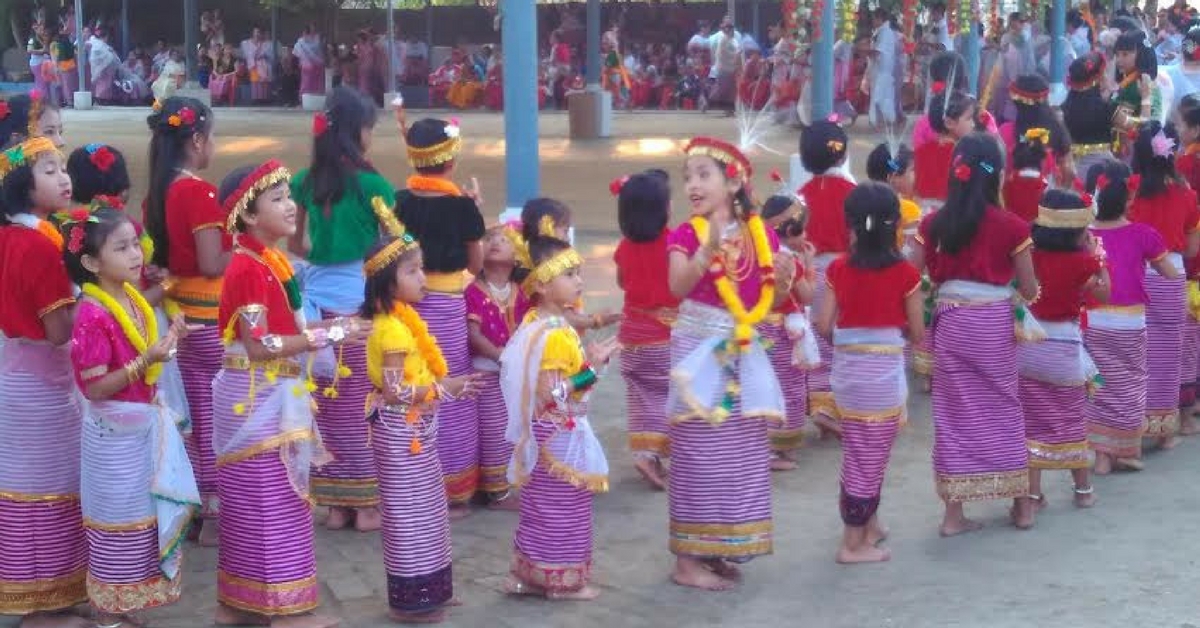
Manipur is a land of stories and Gods, and stories about Gods. Altogether, there are more than 300 Gods worshiped throughout the state. Their stories are passed down through generations, and have become an intrinsic part of the Manipuri way of life. Even today, many of these stories are celebrated as local festivals with the same vigor as in ancient times, reflecting the resilience of faith and beliefs which have clearly stood the test of time.
One such story that I heard from Somendra and Bipin, my companions on field visits to Thoubal, was that of ‘Lai Haraoba’, or ‘Festivity of Gods’, which celebrates the creation of the universe and life.
Legend has it that initially the universe only comprised of the Supreme God, Atiya Sidaba, who lived in complete darkness. Then one day, the seven colours of the rainbow somehow found way into his dark room and illuminated it. Inspired by the beauty of these colours, he set out with some men and women to create the framework for this universe. He was frustrated in his efforts by evil forces whom he defeated with the help of the Goddess of Lightning, and ultimately created this universe of ours.
Once the universe and life came into existence, the Gods held the first Lai Haraoba on a nearby hill so that their descendants would not forget the sacred story of the creation and the birth of the different lives on this earth. According to local beliefs, every year when the summer begins (in April and May), the Gods visit the Earth. Through Lai Haraoba, people celebrate the arrival of the Gods amidst them and pray for peace and prosperity.
The story piqued my interest enough to request Somendra to take me to the local temple to witness Lai Haraoba in all its glory. On the way to see the festival, we saw a number of devotees dressed up in colorful traditional outfits and carrying baskets containing offerings for the local God Ningthou. At the temple gate, a long queue awaited us.
It comprised of young girls and children who were excited to get inside the temple and eager to perform in front of the Gods.
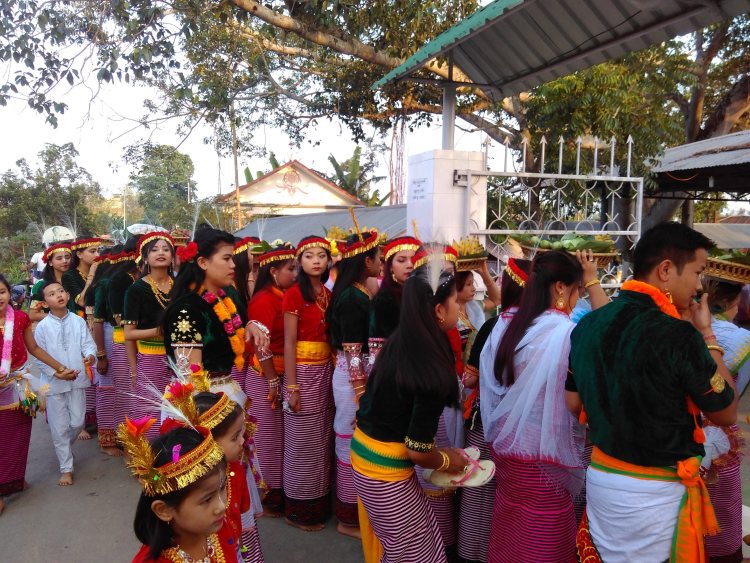
The colourful outfits also add to the charm of the festival. Men sport a white dhoti, dark velvet jacket, and garlands along with a decorated turban which has, among other accessories, a peacock feather. Girls wear a traditional skirt and dark-coloured velvet blouse coupled with a special hair-do which falls gracefully over the face. Roses and a crown of feathers also find a place on their forehead. The jewellery is delicate and the designs are unique to the region.
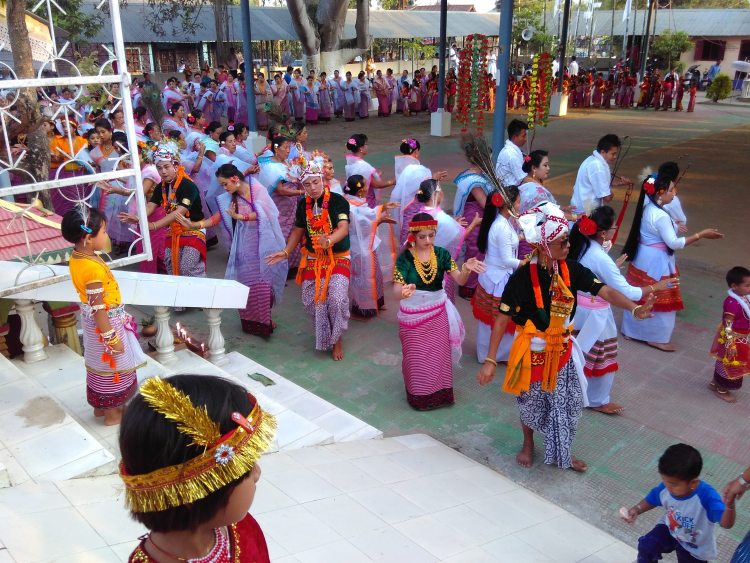
The main attraction of Lai Haraoba is a dance drama performed at the temple of the local deity. The performers enact the stories with guidance from the head priest and priestess of this temple. Sometimes, men also carry pena, a musical instrument similar to a violin, churning out tunes complementing their footsteps.
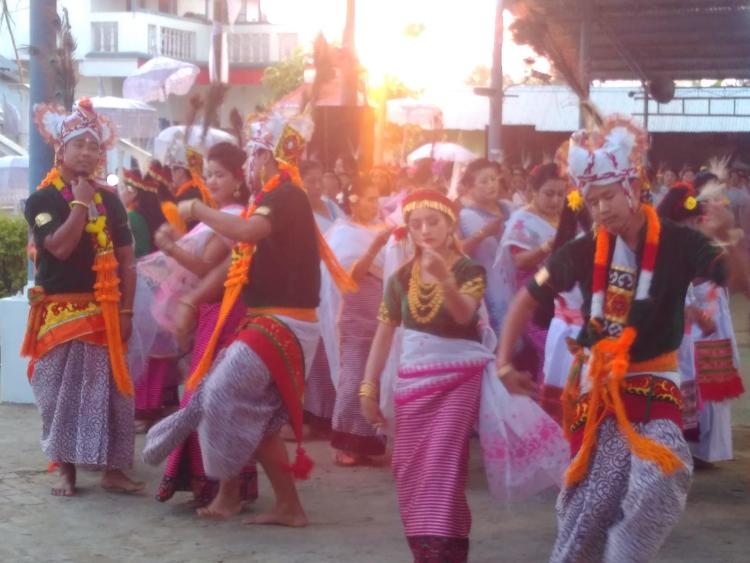
The priest and priestess chant the holy hymns while performers form a human circle around them and dance to it. Very soon, a rhythm sets in, and the fluid body movements of the performers sync in perfectly with the drum beats and holy chants, filling the atmosphere with powerful energy. The performers go into a trance and are transported back to the time when the universe was being created. This goes on till late in the night and covers many stories up to the creation of the universe and life.
While the adults do the main performances in the dance drama, what caught my attention was the enthusiasm with which the children actively participated. Perhaps this is one of the reasons for traditional beliefs having deep roots in the Manipuri way of life. The children are exposed to these stories from an early age and so they grow up appreciating and carrying forward the traditions. There were young boys who forgot the steps but took no time to improvise to the tunes. The young girls were keen to get the steps right, as well as eager to look out for their proud parents in the crowd.
Those too young to dance also made their presence felt by dressing in the traditional way.
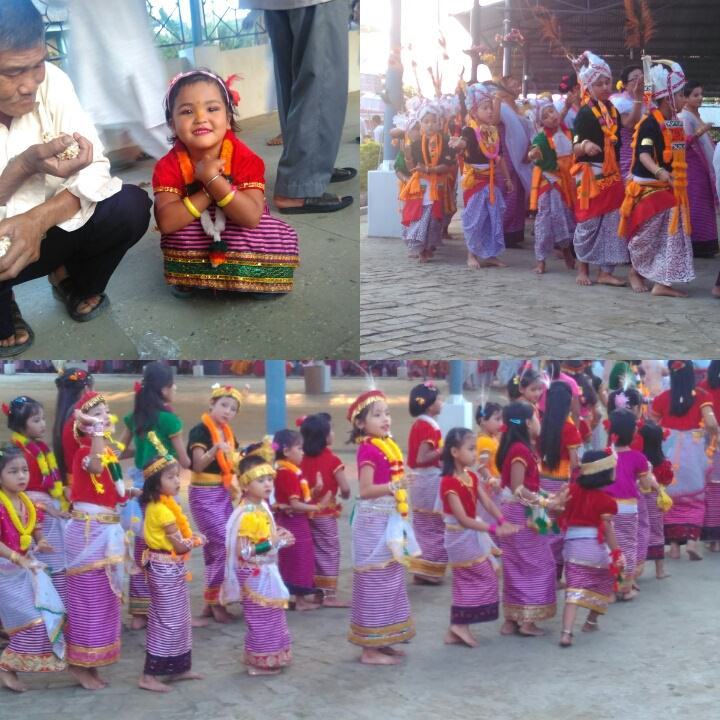
While Lai Haraoba is based on ancient folklore, Somendra told me another reason for its huge popularity among the youth. A Lai Haraoba is incomplete without Mukna, a traditional wrestling event occurring on the final day of the festival. As it turned out, I got to hear another fascinating story about how wrestling became associated with a festival of the Gods.
The story goes back to the time when the Supreme God of Meiteis, the largest ethnic group of Manipur, ruled the land. He had two sons, namely Pakhangba and Sanamahi. When Pakhangba became the successor, Sanamahi became furious. Angry at not being the King, he began spreading chaos and creating discord in the kingdom. To end the confusion and establish lasting peace, Pakhangba challenged Sanamahi to a wrestling match. At the end of a long and bitter fight, he overpowered Sanamahi by using martial art techniques which he had developed over time.
These techniques have evolved ever since as Mukna, an indigenous form of modern-day wrestling.

The idea behind Mukna is that the person who touches the ground first with his head, shoulders, back, hands, or knees loses the game. The sport requires rigorous training and tests core physical strength of the wrestlers. Absolute fitness and skill are necessary to pin the opponent to the ground with a part of their body besides the feet. One who can do it is “the victor” and receives handsome rewards.
Fair play is extremely important, and holding the opponent’s hair, neck, ears, or hands, and biting and kicking are foul play. The games teach values like discipline, hard work, and sportsmanship. These values are important to lead a good life beyond the wrestling arena, and Lai Haraoba prepares the players for such a life.
Even though the first recorded evidence of Mukna dates back to the 15th century, many traditional types of equipment – such as the waist belts (players hold each other’s belts to begin the match) known as ningri from those days – still find their way into the games. People of Manipur love sports, and the festival provides them an occasion to keep in touch with their rich traditions while pursuing something they love.
In this way, the festival has maintained continuity in the emotional and cultural life of Manipuri people across several generations.
It has succeeded in keeping an indigenous sport alive, and made it a fertile training ground for future champions.
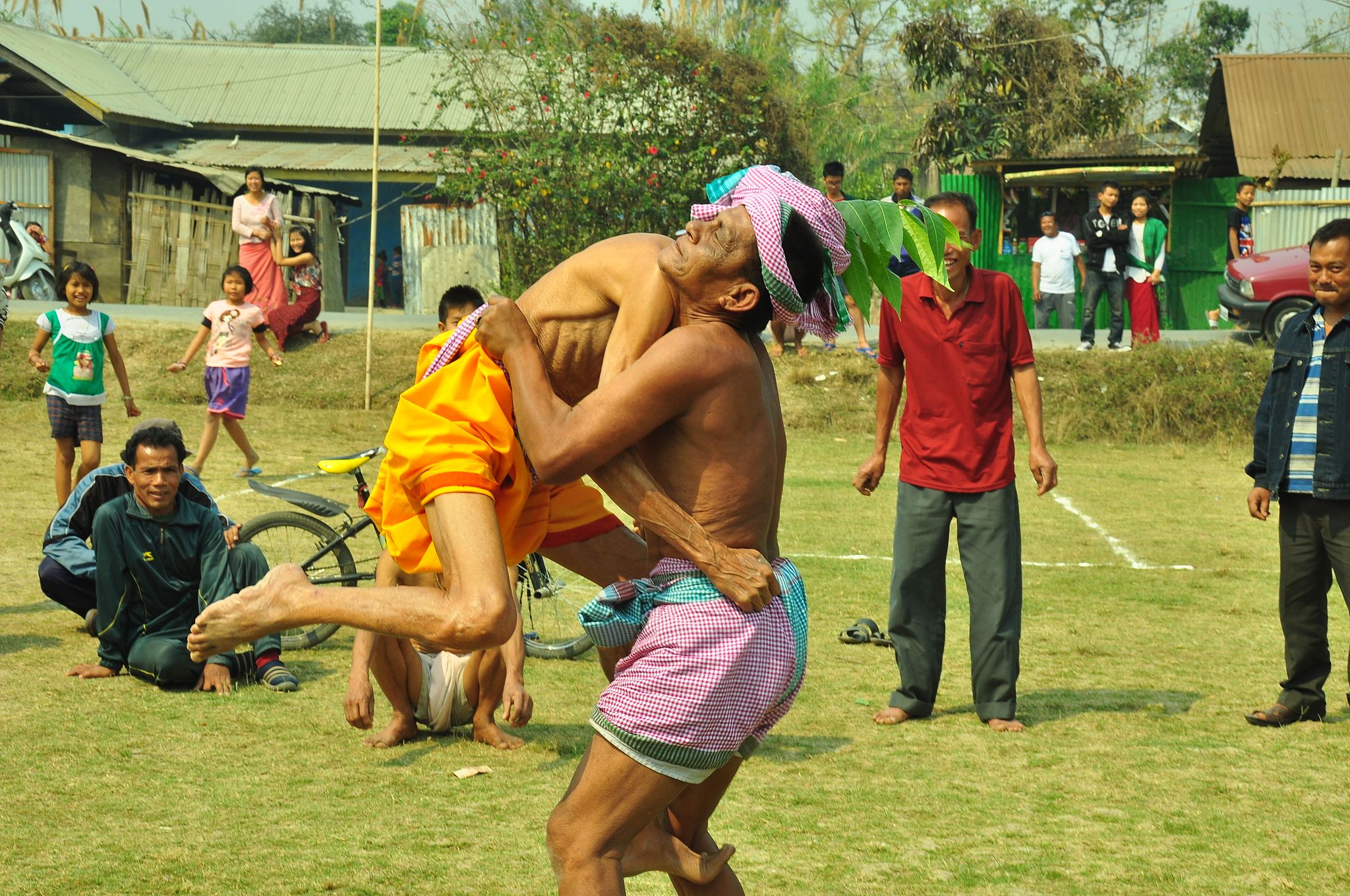
In the plains of Manipur, the distinction between old and new disappears, as they go hand in hand. They not only coexist, but also breathe life into each other. The celebration of the ancient folklore of Lai Haraoba shows that old does not need to give way to new. Sometimes, both old and new can find a way to survive and flourish.
Those taking part in the festivals and sporting events afterward win medal and laurels for the country. They will also tell the stories to their children, who will preserve the legend. Awards will also come to them, like the seven colours reached inside the dark room of their Supreme God.
Want to cover inspiring stories of change and make a substantial difference in the social sphere? Click here to join the Milaap Fellowship Program.
Like this story? Or have something to share? Write to us: [email protected], or connect with us on Facebook and Twitter.
NEW: Click here to get positive news on WhatsApp!
If you found our stories insightful, informative, or even just enjoyable, we invite you to consider making a voluntary payment to support the work we do at The Better India. Your contribution helps us continue producing quality content that educates, inspires, and drives positive change.
Choose one of the payment options below for your contribution-
By paying for the stories you value, you directly contribute to sustaining our efforts focused on making a difference in the world. Together, let’s ensure that impactful stories continue to be told and shared, enriching lives and communities alike.
Thank you for your support. Here are some frequently asked questions you might find helpful to know why you are contributing?


This story made me
-
97
-
121
-
89
-
167











